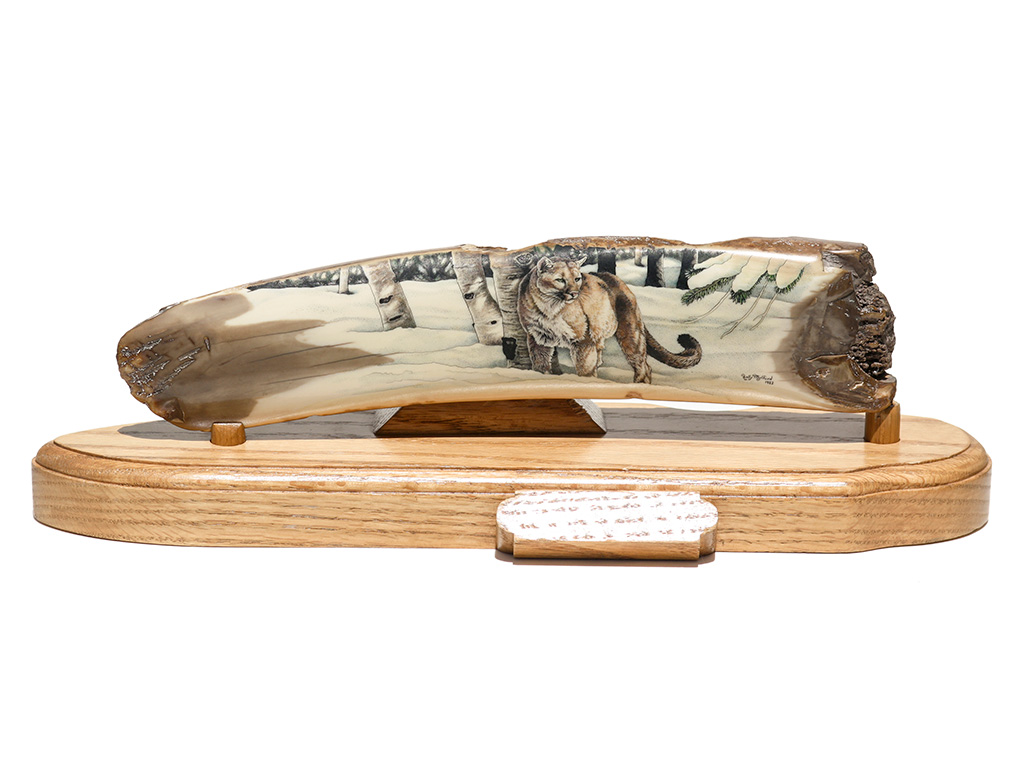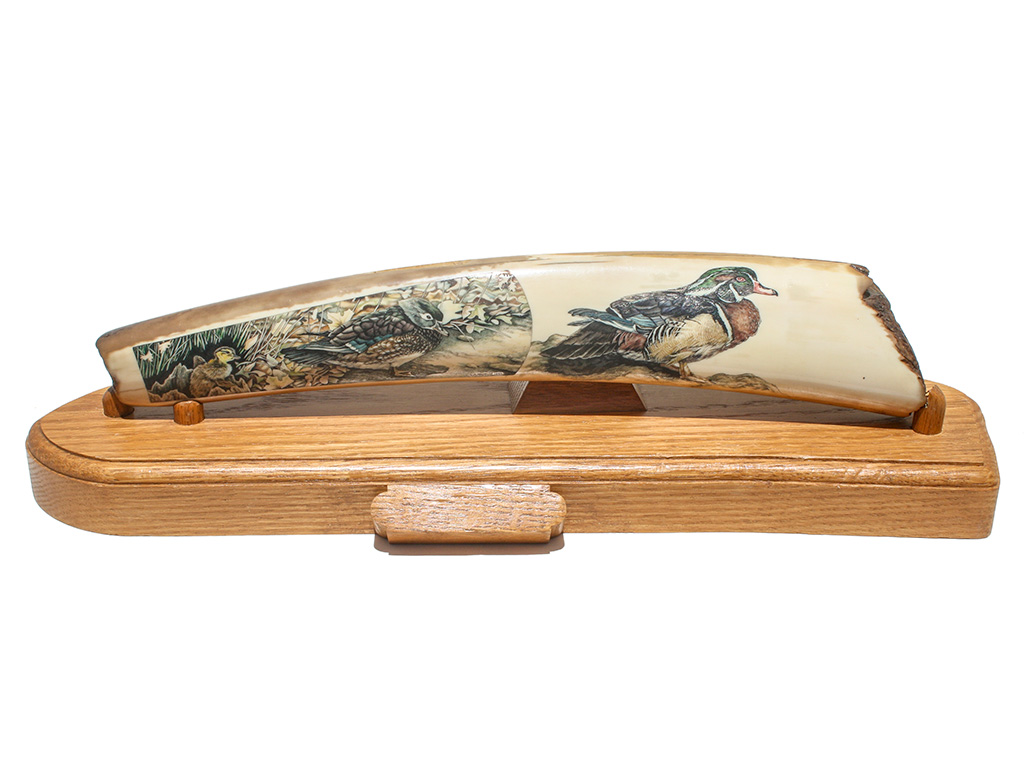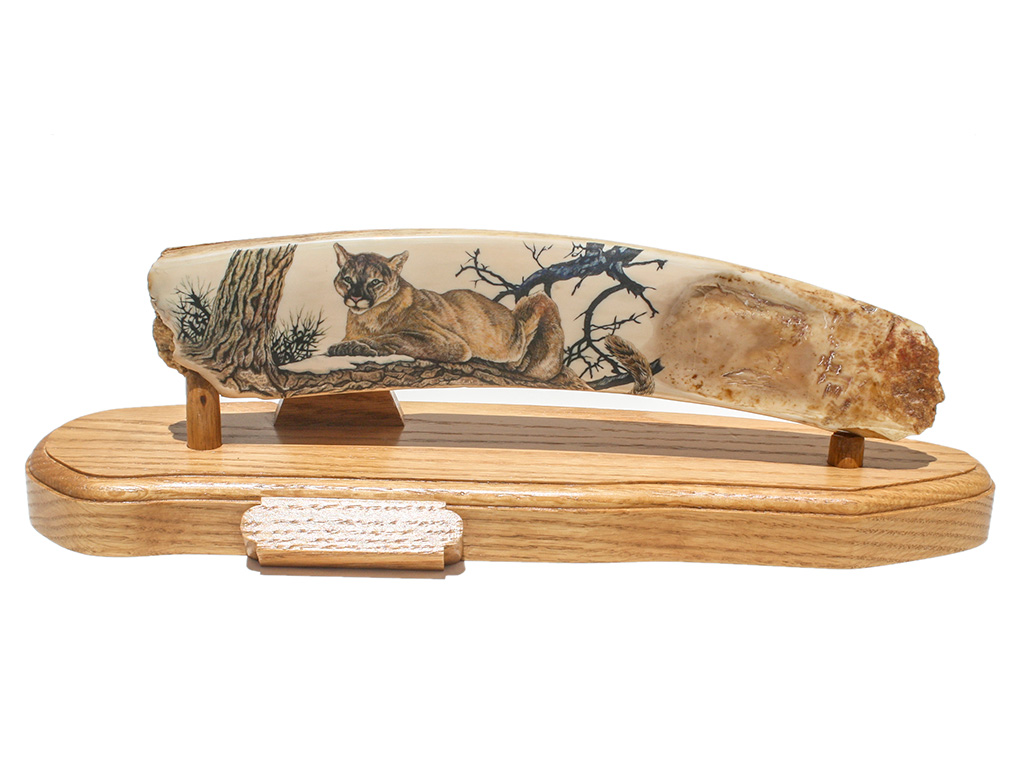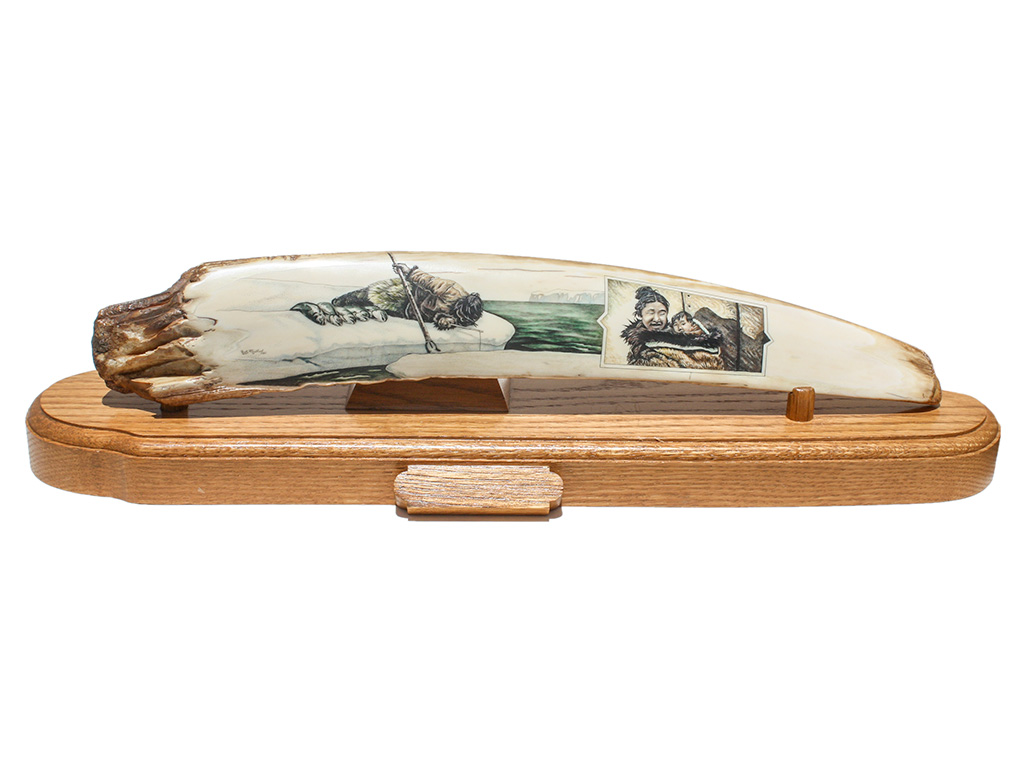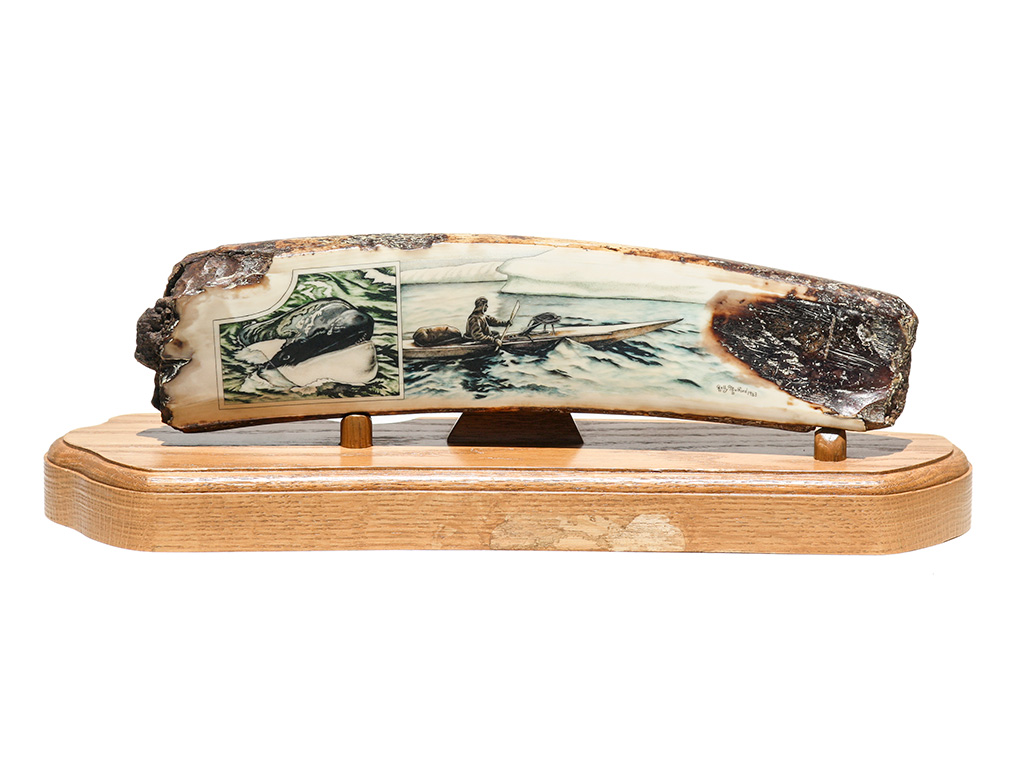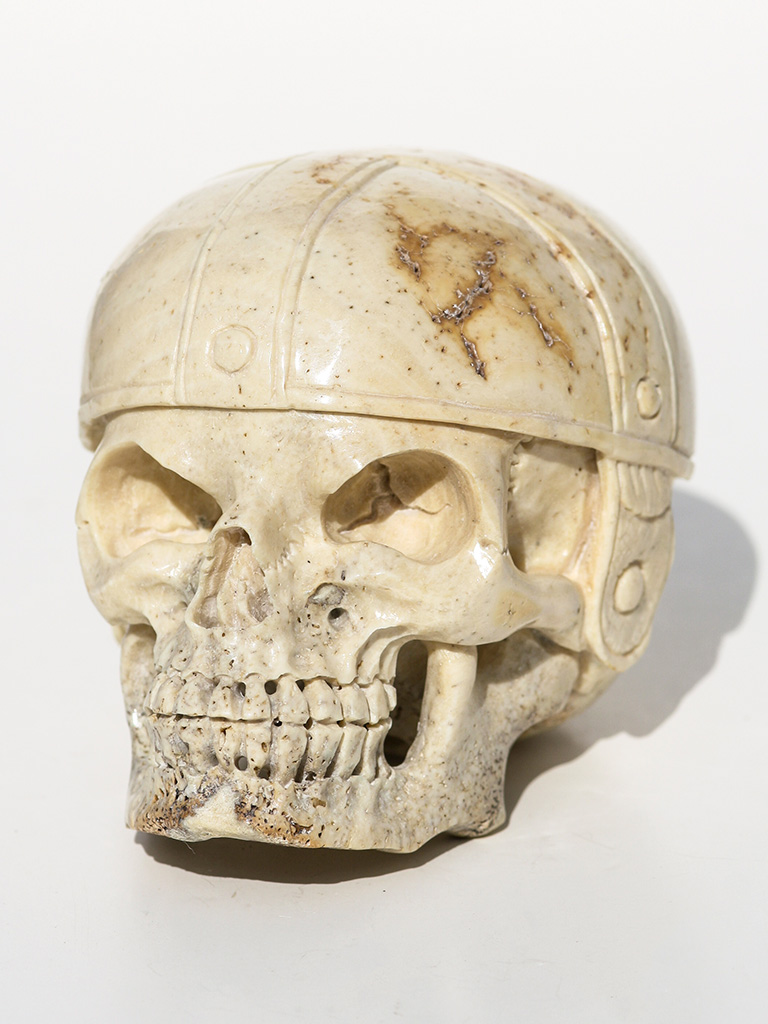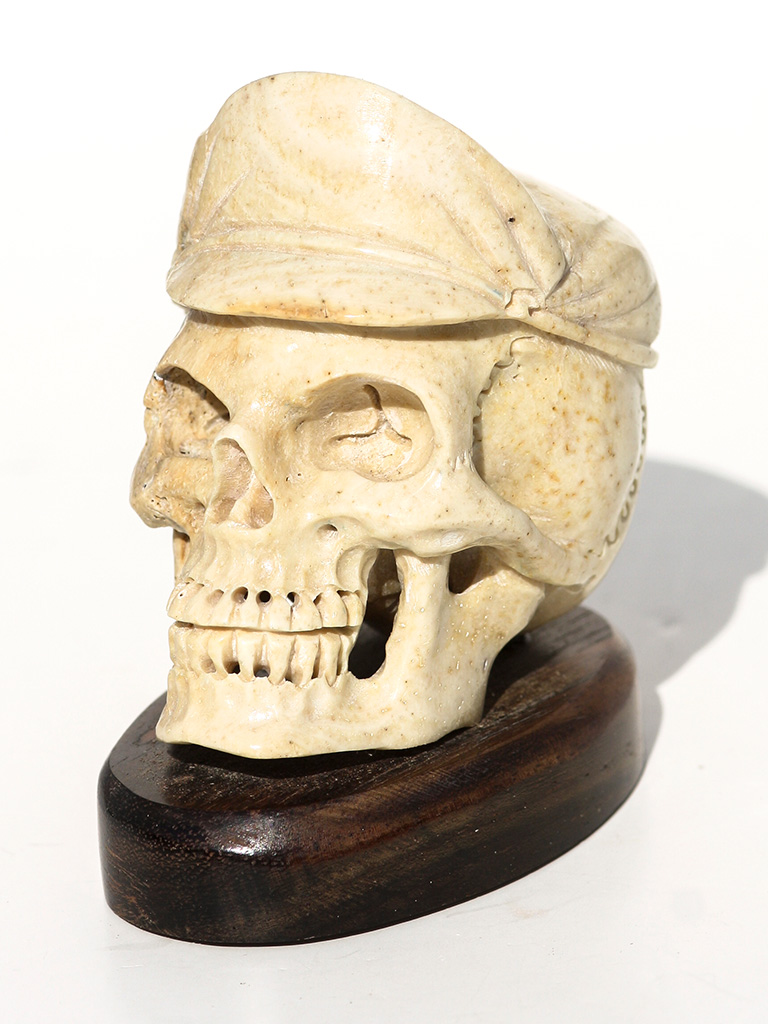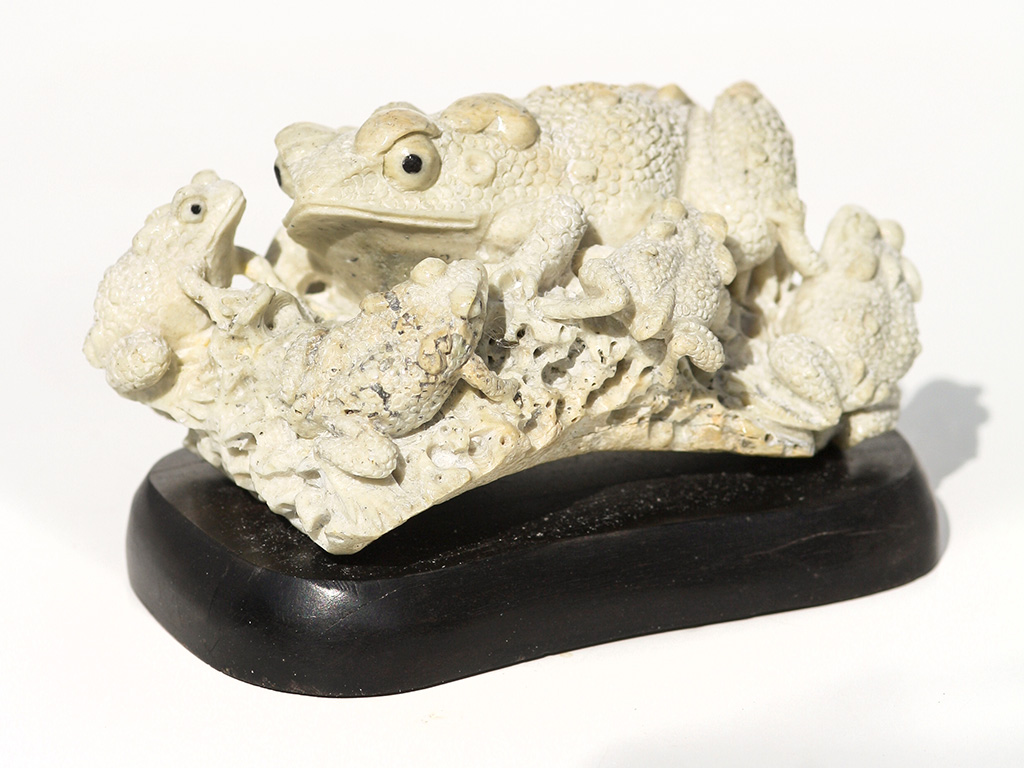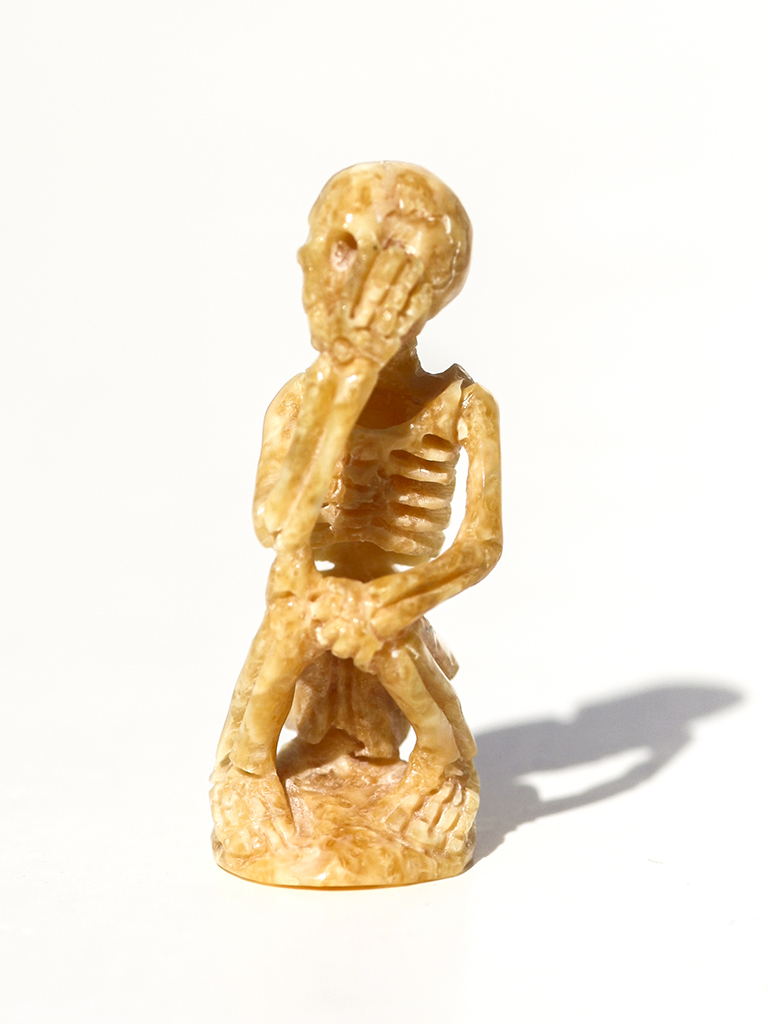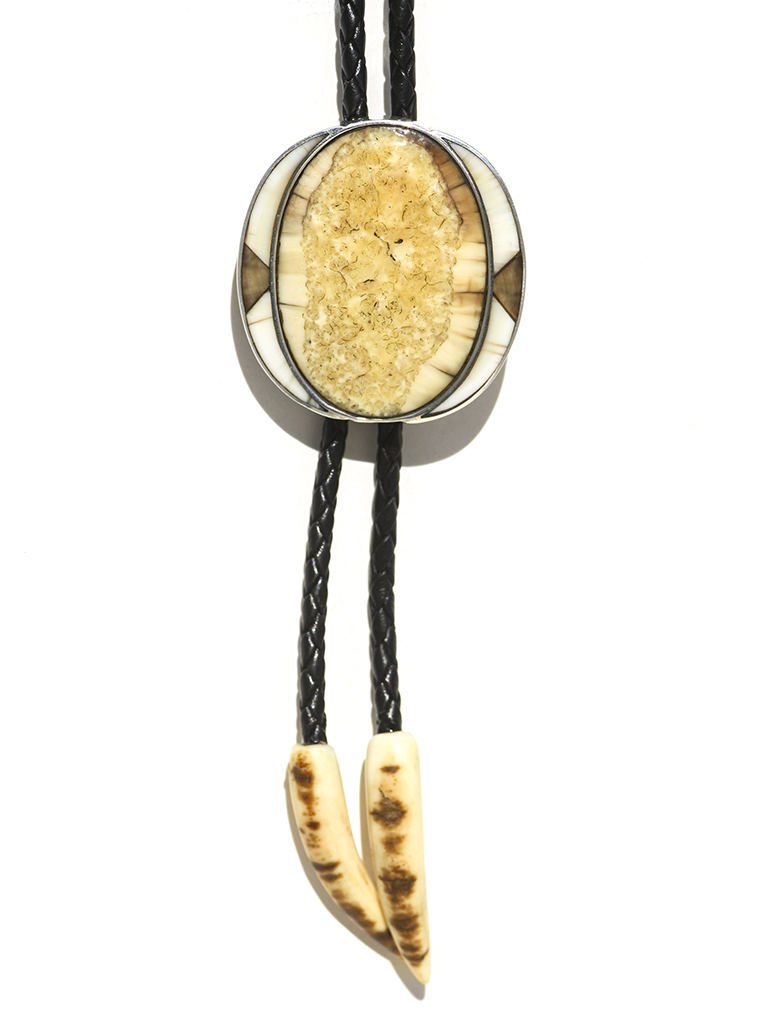“Hunting Puma in Snow” color scrimshaw on ancient walrus tusk ivory artifact by the late Kelly Mulford. Alert Puma has just heard something under the snow. See his ears pricked forward. He is going to be eating soon. Judging by his appearance, he must be a superior hunter. Mulford always found a way to use the natural shape and tones of the ivory. Note the way he used the natural colors of the ivory in the snow laden branch. Nice. Kelly created this in 1983 and is from one of our collectors who is no longer with us. The ivory was used as an ice axe by ancient people hundreds of years ago. Rare opportunity to add a first rate Kelly Mulford to one’s collection for 1980s prices.
“Wood Duck Family” color scrimshaw on ancient walrus tusk ivory by the late Kelly Mulford. One of the most colorful of all ducks, this attractive family seems ready for a Sunday stroll dressed in their finery. Mulford loved to do wildlife, especially birds, as can be easily seen in this beauty. This was created in 1983 by Mulford and is from the collection of one of our clients who is no longer with us. Excellent opportunity to add to your collection at 1980s prices. Excellent work.
“Puma in Winter” color scrimshaw on ancient walrus tusk ivory artifact by the late Kelly Mulford. Alert Puma is well positioned to spot any movement below for his next meal. Beautiful composition by Mulford on this rare piece. Note the tones in the Puma’s fur match the color in the ivory. Details such as this are rare today. Mulford was one of the very best working and left us all too soon. The ivory was used as an ice axe hundreds and hundreds of years ago. This was created in 1983 and is from the extensive collection of one of our clients who is no longer with us. Excellent opportunity to add a rare Mulford work to your collection at 1980s prices.
“Native Fisherman on Ice” color scrimshaw on ancient walrus tusk ivory by the late Kelly Mulford. Patient fisherman jiggles a lure attracting fish. He then spears them with his handmade trident, probably made from walrus tusk. Looks like a productive day. Second panel depicts a Native woman preparing to venture outside. Everyone appears to be quite warm at the present time. This was created by Mulford in 1982. Long time ago in the contemporary scrimshaw world. It is from one of our clients who is no longer with us. Nice Mulford at early 1980s price.
“Searching Native Hunter” color scrimshaw on ancient walrus tusk ivory artifact by the late Kelly Mulford. Mulford was a master of the separate panel scrimshaw technique, each piece adding something to the whole of the artwork. We see the intrepid hunter in a spring ice laden area searcching for a walrus or seal. Love the detail of the coiled rope on the deck attached to a long lance. The orca has just surfaced and Kelly did a masterful job of the cold water cascading from his head. Spectacular work. Very heavy ice axe (2 pounds, 6.2 ounces!). This is from a long time client who is no longer with us. Estate asked us to price to move. It was created in 1983 and should be valued at least 25% higher.Great chance to add a vintage Mulford to your collection at 1980s prices.
“Skull with Football Helmet” carved on large, heavy piece of ancient walrus jawbone hundreds of years old by unknown artist. Really like this playful piece with the old style leather helmet. This guy must have been really tough. This is a very heavy piece of ancient walrus jawbone weighing 1 pound, 2 oz. Rare solid piece. Not much of this caliber around anymore.
Notice:
This is ancient walrus tusk jawbone found in the Northern Bering Sea area. The material is 500-1500 years old and is occasionally found in ancient Eskimo camp and hunting sites. The marvelous colors are the result of minerals that have been absorbed into the jawbone over hundreds and hundreds of years. Obviously this material cannot be replenished, making it quite collectible and valuable.
“Skull with Motorcycle Cap” carved from ancient walrus jawbone hundreds of years old by talented unknown artist. Love the cap. Reminds one of Brando in “The Wild Ones”. Brings a smile to one’s face. Great addition to any collection.
Notice:
This is ancient walrus tusk jawbone found in the Northern Bering Sea area. The material is 500-1500 years old and is occasionally found in ancient Eskimo camp and hunting sites. The marvelous colors are the result of minerals that have been absorbed into the jawbone over hundreds and hundreds of years. Obviously this material cannot be replenished, making it quite collectible and valuable.
“Five Frogs Two Tadpoles” intricate carving on ancient walrus jawbone created by talented unknown carver. Whole family of frogs, plus tadpoles depicted here. Excellent detail on large piece of walrus jawbone. Excellent addition to any collection.
Notice:
This is ancient walrus tusk jawbone found in the Northern Bering Sea area. The material is 500-1500 years old and is occasionally found in ancient Eskimo camp and hunting sites. The marvelous colors are the result of minerals that have been absorbed into the jawbone over hundreds and hundreds of years. Obviously this material cannot be replenished, making it quite collectible and valuable.
Yoga Pose Skeleton Carving created by unknown carver on ancient walrus tusk ivory. Whimsical carving brings a smile to everyone’s face. Excellent color in this the result of minerals that have been absorbed into the ivory over hundreds of years as it was buried in the Northern Bering Sea area.
Fossil Ivory Bolo and Buckle Set one of a kind matching set of ancient walrus tusk iory and mammoth ivory in sterling silver. Bolo features a 22″ long braided leather with hand carved mammoth ivory tips. Oval buckle set in sterling silver features ancient walrus tusk ivory and mammoth ivory inlay. Buckle designed for a belt up to 1 1/4″ wide. Incredible craftsmanship.

